40 three parts of the nucleotide
What Are The Three Parts Of The Nucleotide? - Cooking Tom A nucleotide is the smallest unit of DNA and RNA, it also acts as a template to make proteins. There are 3 parts to a nucleotide: the phosphate group, the nitrogenous base, and the sugar. What Are the Properties of the Anticodon? In a genetic code, the genetic information is encoded in a nucleic acid. What does blood do? - InformedHealth.org - NCBI Bookshelf 29.8.2019 · All solid parts of the blood come from common parent cells known as stem cells. In adults, blood cells are mainly produced in the bone marrow. The various blood cells develop in several stages from stem cells to blood cells or blood platelets. White blood cells such as lymphocytes don't only mature in the bone marrow, but also in the lymph nodes.
Nucleotide - Genome 3.10.2022 · A nucleotide is the basic building block of nucleic acids (RNA and DNA). A nucleotide consists of a sugar molecule (either ribose in RNA or deoxyribose in DNA) attached to a phosphate group and a nitrogen-containing base. The bases used in DNA are adenine (A), cytosine (C), guanine (G) and thymine (T).
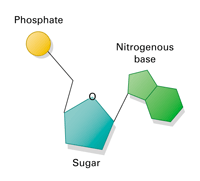
Three parts of the nucleotide
Nucleotides and Bases - Genetics Generation Nucleotide Structure Courtesy of the National Human Genome Research Institute. Nucleotides. A nucleotide is the basic structural unit and building block for DNA. These building blocks are hooked together to form a chain of DNA. A nucleotide is composed of 3 parts: * five-sided sugar * phosphate group * nitrogenous base (nitrogen containing) Name the 3 parts of a Nucleotide? - Answers A nucleotide has three parts: a sugar, a base, and a phosphate group, which contains phosphorus and oxygen atoms. its attached by DNA, RNA, and ATP. What are the three different parts of a... Nucleotide: Structure, Examples and Function - BYJUS A nucleotide is an organic molecule with a basic composition of a nitrogenous base, pentose sugar and phosphate. DNA and RNA are polynucleotides, which contain a chain of nucleotides monomers with different nitrogenous bases. Nucleotides are essential for carrying out metabolic and physiological activities.
Three parts of the nucleotide. What Are The Three Parts Of A Nucleotide | Jacks Of Science Each nucleotide is composed of three parts: a sugar, a phosphate, and a nitrogen-containing base. The sugar molecule can be either ribose or deoxyribose, and the phosphate group is bonded to the sugar via a phosphodiester bond. The nitrogen-containing base is attached to the sugar via a nitrogenous base pair. What is a phosphate group? The Formulation of Health Policy by the Three Branches of … 15.7.1988 · Conservative persons in Congress never actively opposed the legislation, but narrowed their objections to certain "undeserving" groups such as drug users, homosexuals, and persons with psychiatric disorders involving antisocial behavior or gender identity. 65 They also objected to parts of the ADA that fed directly into the fears of the public, even though those … What are the three parts of a nucleotide? - Toppr Ask >> What are the three parts of a nucleotide. Question . What are the three parts of a nucleotide? Hard. Open in App. Solution. Verified by Toppr. Figure shows adenine structure. Nucleotide shown in the figure is divided into nitrogen containing base, sugar backbone and phosphate group. Why are the three parts of a nucleotide? - yonbo.norushcharge.com The three parts of a nucleotide are connected via covalent bonds. The nitrogenous bases bonds to the first or primary carbon atom of the sugar. The number 5 carbon of the sugar bonds to the phosphate group. A free nucleotide may have one, two, or three phosphate groups that attach as a chain to the sugar's 5-carbon.
What are the three parts of a nucleotide? Flashcards | Quizlet What are the three parts of a nucleotide? Phospate, sugur, nitrogen base Nucleotide basic unit surgery in DNA deoxylibonuelic hydrogen bonds hold DNA together covalent bond is sharing of electrons ionic is the attraction between 2 ions 4 nitrogen bases cytosine, thymine, adenine, guanine DNA is a polymer 3 Parts of a Nucleotide and How They Are Connected - ThoughtCo Nucleotides in DNA and RNA Both deoxyribonucleic acid (DNA) and ribonucleic acid (RNA) are made up of nucleotides which consist of three parts: Nitrogenous Base Purines and pyrimidines are the two categories of nitrogenous bases. Adenine and guanine are purines. Cytosine, thymine, and uracil are pyrimidines. 3 parts of DNA nucleotide and 4 bases of DNA - Quizlet Terms in this set (4) What are the 3 parts of a DNA nucleotide. Phosphate, deoxyribose sugar, and nitrogenous base. What are the 4 bases of DNA. Adenine, Thymine, Guanine, and Cytosine. Adenine bonds with? Ribosome - Definition, Function and Structure | Biology Dictionary 28.4.2017 · The small subunit, as seen in the image above, helps to hold the mRNA in place as the ribosome translates it into protein. The larger subunit has various sites involved with different parts of the protein synthesis process. When the tRNA first binds to the mRNA, the P site can bind to these molecules.
Nucleotide - Genome A nucleotide consists of a sugar molecule (either ribose in RNA or deoxyribose in DNA) attached to a phosphate group and a nitrogen-containing base. The bases used in DNA are adenine (A), cytosine (C), guanine (G) and thymine (T). In RNA, the base uracil (U) takes the place of thymine. What Are The Three Parts Of An Rna Nucleotide - Realonomics What is a nucleotide What are the three parts of a nucleotide How is a nucleotide DNA different from a ribonucleotide RNA )? Nucleotides are composed of phosphoric acid a pentose sugar (ribose or deoxyribose) and a nitrogen-containing base (adenine cytosine guanine thymine or uracil). Ribonucleotides contain ribose while deoxyribonucleotides ... Nucleotide - Wikipedia A nucleotide is composed of three distinctive chemical sub-units: a five-carbon sugar molecule, a nucleobase (the two of which together are called a nucleoside), and one phosphate group.With all three joined, a nucleotide is also termed a "nucleoside monophosphate", "nucleoside diphosphate" or "nucleoside triphosphate", depending on how many phosphates make up the phosphate group. Explanation of 3 Parts of a Nucleotide and Nucleotide Examples - HoneyReads Within the 3 parts of a nucleotide, there are five types of nucleotide bases which are: Adenine (A), Cytosine (C), Guanine (G), Thymine (T) and Uracil (U). When they are combined with sugar, they form nucleotide adenosine, cytidine, guanosine, thymidine, and uridine. 1. Adenine
What are the Three Parts of a Nucleotide? | Albert.io 1.3.2022 · Putting it All Together. To recap, we have covered what a nucleotide is, what the three parts of a nucleotide are, we have covered the specifics of nitrogenous bases, pentose sugars, and phosphates, and we have discussed how nucleotides differ in DNA and RNA.
Nucleotide - Definition, Structure (3 Parts), Examples & Function A nucleotide is made up of three parts: a phosphate group, a 5-carbon sugar, and a nitrogenous base. The four nitrogenous bases in DNA are adenine, cytosine, guanine, and thymine. RNA contains uracil, instead of thymine. A nucleotide within a chain makes up the genetic material of all known living things.
3 Parts of a Nucleotide and How They Are Connected - ThoughtCo 24.1.2020 · You may be asked to name the three parts of a nucleotide and explain how they are connected or bonded to each other. Here's the answer for both DNA and RNA. Nucleotides in DNA and RNA . Both deoxyribonucleic acid (DNA) and ribonucleic acid (RNA) are made up of nucleotides which consist of three parts:
The 5 Kinds of Nucleotides - ThoughtCo The five bases are adenine, guanine, cytosine, thymine, and uracil, which have the symbols A, G, C, T, and U, respectively. The name of the base is generally used as the name of the nucleotide, although this is technically incorrect. The bases combine with the sugar to make the nucleotides adenosine, guanosine, cytidine, thymidine, and uridine.
What Are The Three Parts Of An Rna Nucleotide - Realonomics Each nucleotide is composed of three parts: a five-carbon sugar known as ribose a phosphate group and one of four bases attached to each ribose. The four bases are adenine (A) cytosine (C) guanine (G) and uracil (U). What three components form the structure of a nucleotide? DNA and RNA are made up of monomers known as nucleotides.
Directionality (molecular biology) - Wikipedia Directionality, in molecular biology and biochemistry, is the end-to-end chemical orientation of a single strand of nucleic acid.In a single strand of DNA or RNA, the chemical convention of naming carbon atoms in the nucleotide pentose-sugar-ring means that there will be a 5′ end (usually pronounced "five-prime end"), which frequently contains a phosphate group attached to the 5′ …
What are the Three Parts of a Nucleotide? | Albert.io Nucleotides are made up of 3 parts. The first is a distinct nitrogenous base, which is adenine, cytosine, guanine or thymine. In RNA, thymine is replaced by uracil. These nitrogenous bases are either purines or pyrimidines. Base pairs are formed when adenine forms a hydrogen bond with thymine, or cytosine forms a hydrogen bond with guanine.
The three components of a nucleotide are .........., .......... and Verified by Toppr The three components of a nucleotide are nitrogenous base, sugar and phosphate Was this answer helpful? 0 0 Similar questions Easy View solution > Medium View solution > View more Click a picture with our app and get instant verified solutions
Answered: What are the 3 parts of a nucleotide? | bartleby What are the 3 parts of a nucleotide? Question. What are the 3 parts of a nucleotide? ...
Why are the three parts of a nucleotide? The three parts of a nucleotide are connected via covalent bonds. The nitrogenous bases bonds to the first or primary carbon atom of the sugar. The number 5 carbon of the sugar bonds to the phosphate group. A free nucleotide may have one, two, or three phosphate groups that attach as a chain to the sugar's 5-carbon.
What makes up a nucleotide? - kang.churchrez.org What are the 3 parts that make up a nucleotide? A nucleotide consists of a sugar molecule (either ribose in RNA or deoxyribose in DNA) attached to a phosphate group and a nitrogen-containing base. ... Nucleotides each have three parts: phosphate, sugar molecule, and one of four bases. The bases include: A, (adenine), g (guanine), t (thymine), c ...
What Are The 3 Parts Of A Nucleotide? - Cooking Tom There are three major components to a nucleotide, and they are the backbone, deoxyribose sugar, and a nitrogenous base. The backbone is a repeating chain of deoxyribose sugars. The deoxyribose sugar is made up of five carbon atoms, including the glycoside bond. The nitrogenous base is made up of an amine and a hydrophobic base.
What Are the 3 Parts of a Nucleotide.docx - What Are the 3... A free nucleotide may have one , two , or three phosphate groups attached as a chain to the 5 - carbon of the sugar . When nucleotides connect to form DNA or RNA , the phosphate of one nucleotide attaches via a phosphodiester bond to the 3 - carbon of the sugar of the next nucleotide , forming the sugar - phosphate backbone of the nucleic acid .
What are the three parts of a nucleotide? - Answers A nucleotide is made of three parts. Those parts are: a five carbon ribose sugar, a phosphate molecule, and a nitrogenous base (adenine, guanine, cytosine, or uracil). Related questions What are...
Why are the three parts of a nucleotide? Explained by FAQ Blog Which of the 3 parts of a nucleotide helps determine the code or sequence of a gene? Each nucleotide contains one of four nitrogen-containing bases: adenine (A), thymine (T), cytosine (C) and guanine (G). The sequence of these bases constitutes the genetic code - that specifies the order and number of amino acids in a protein.
Nucleotide: Structure, Examples and Function - BYJUS A nucleotide is an organic molecule with a basic composition of a nitrogenous base, pentose sugar and phosphate. DNA and RNA are polynucleotides, which contain a chain of nucleotides monomers with different nitrogenous bases. Nucleotides are essential for carrying out metabolic and physiological activities.
Name the 3 parts of a Nucleotide? - Answers A nucleotide has three parts: a sugar, a base, and a phosphate group, which contains phosphorus and oxygen atoms. its attached by DNA, RNA, and ATP. What are the three different parts of a...
Nucleotides and Bases - Genetics Generation Nucleotide Structure Courtesy of the National Human Genome Research Institute. Nucleotides. A nucleotide is the basic structural unit and building block for DNA. These building blocks are hooked together to form a chain of DNA. A nucleotide is composed of 3 parts: * five-sided sugar * phosphate group * nitrogenous base (nitrogen containing)







/what-are-the-parts-of-nucleotide-606385-FINAL-5b76fa94c9e77c0025543061.png)


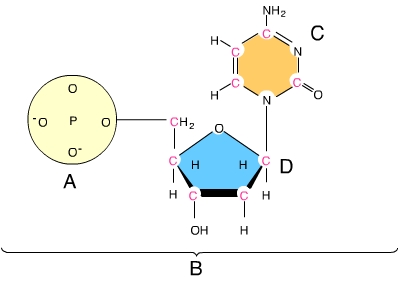

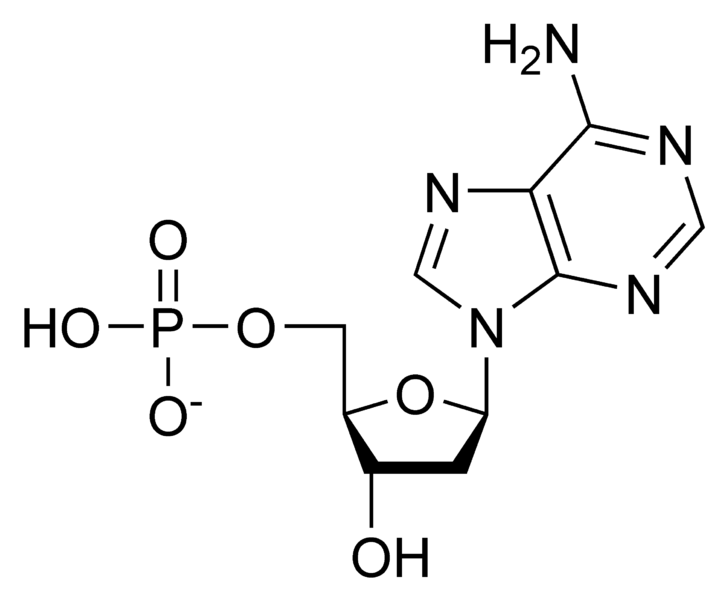
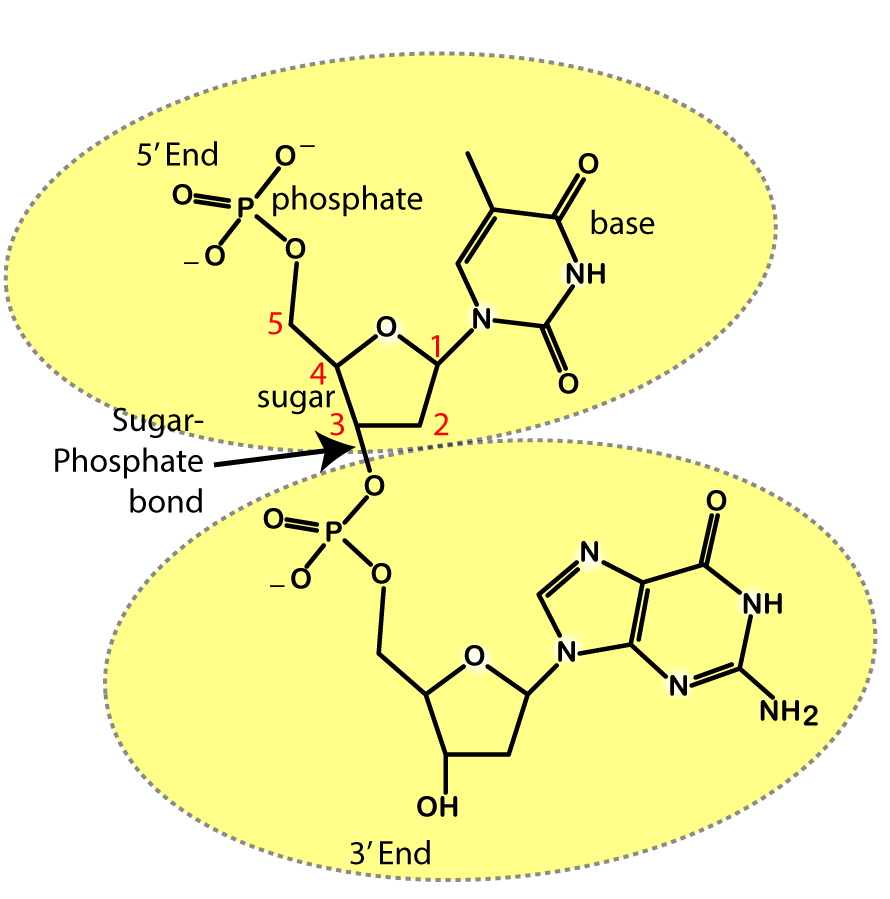
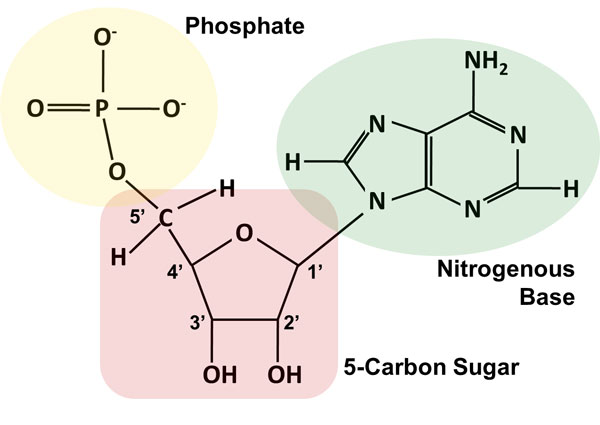
.jpg)



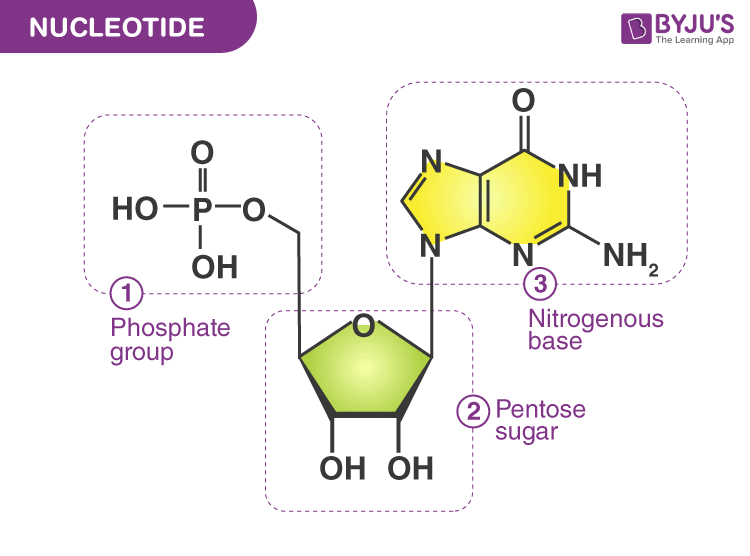
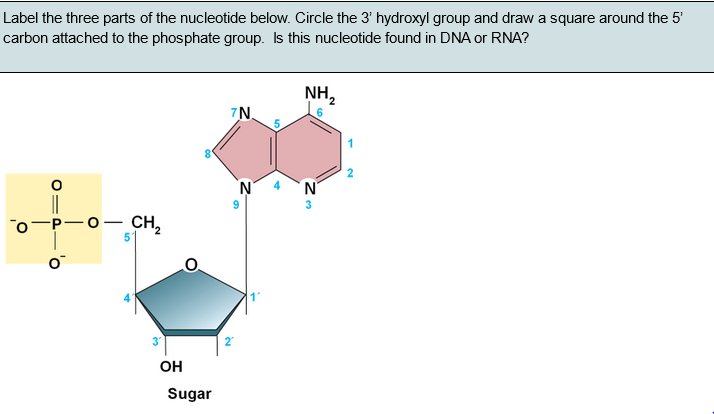
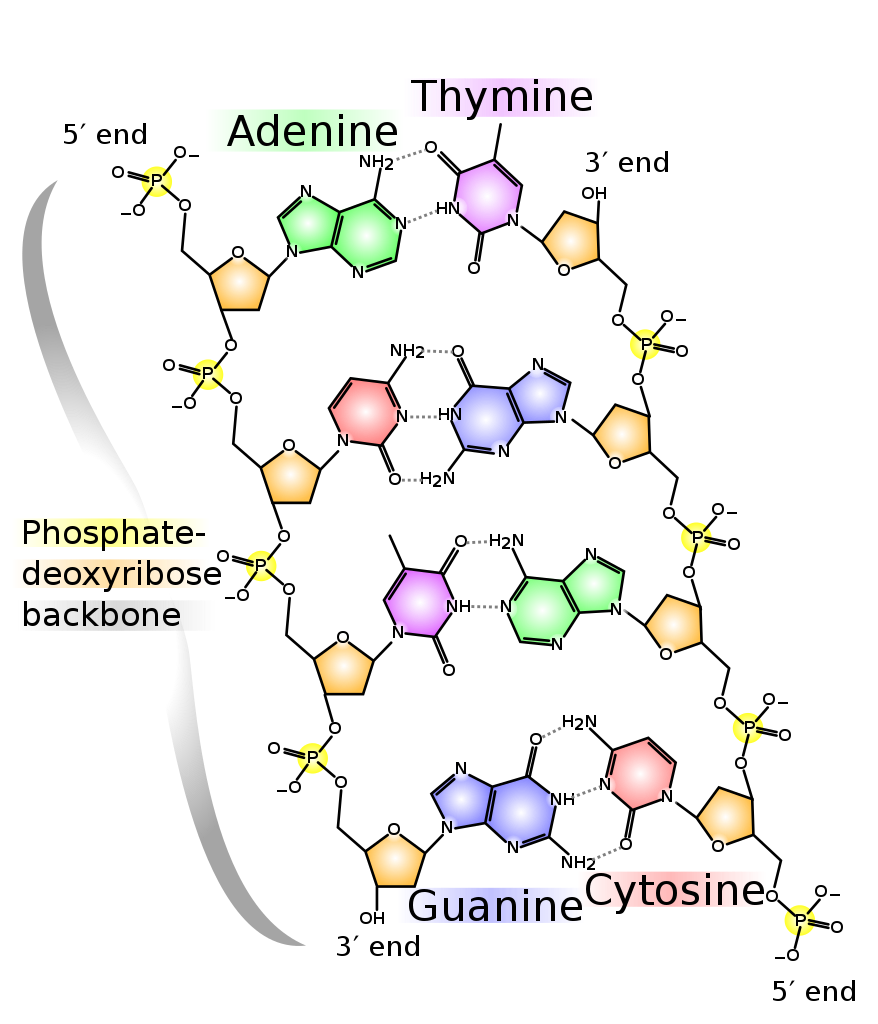

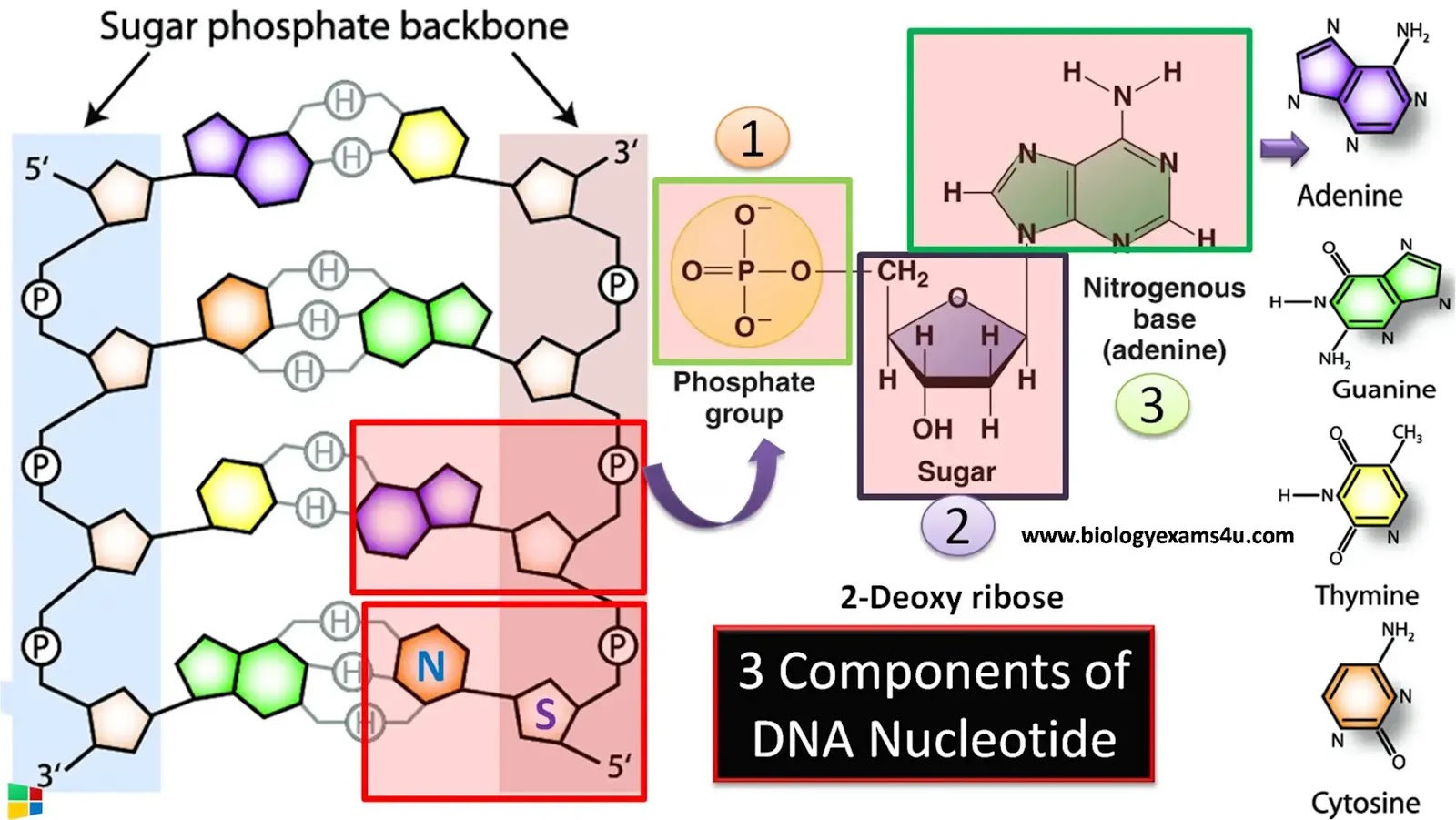

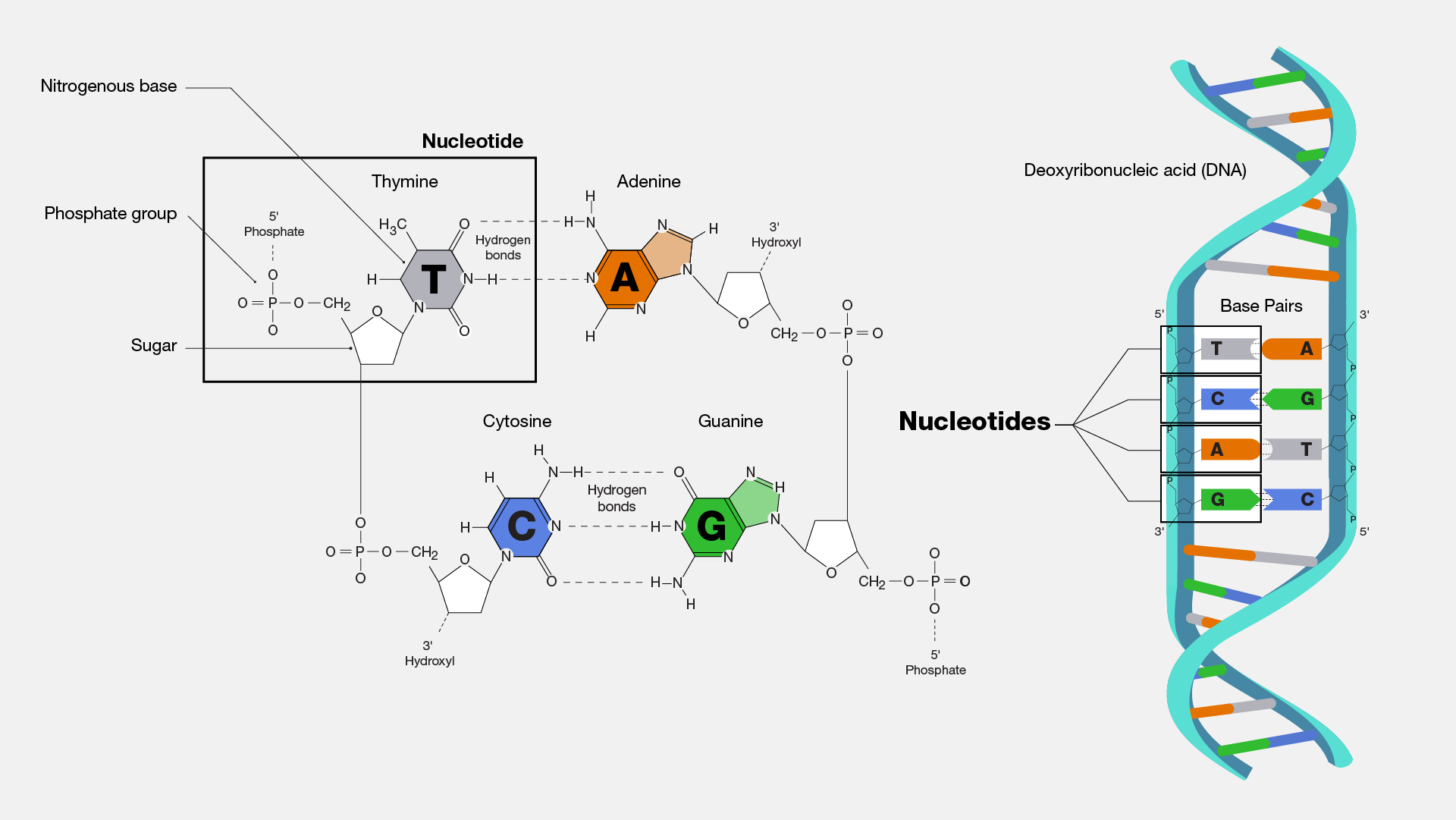
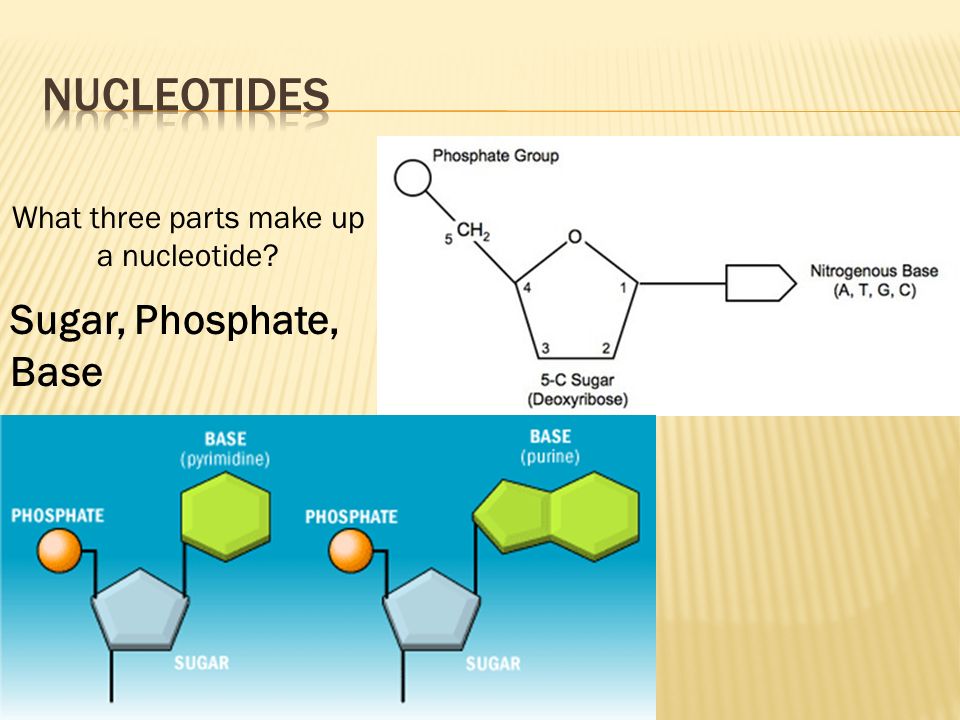



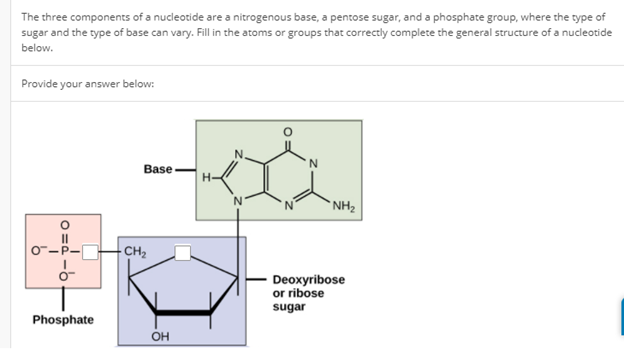





Post a Comment for "40 three parts of the nucleotide"